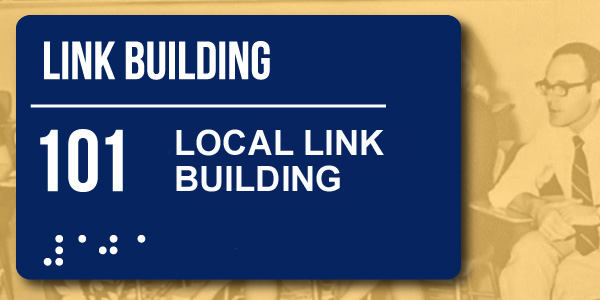 Link building is a project, often long and lengthy in nature. Good link building campaigns employ diverse strategies to build backlinks over the course of months, with diverse goals and objectives.
Link building is a project, often long and lengthy in nature. Good link building campaigns employ diverse strategies to build backlinks over the course of months, with diverse goals and objectives.
It doesn't take thousands of backlinks to rank. The goal in link building should be sustainable activity that will continue to result in good links that make sense, without creating abnormal patterns or high link velocity.
This mindset is often hard to sell, and can be difficult for those used to link building of the past. Yet building confidence and trust is absolutely vital to a successful link building project.
There are five different strategies worth examining at the start of any campaign, which will help build confidence in a fresh link building project. They are:
Local Link Building
Local link building is a commonly untapped resource, which can lead to quick yet quality links.
Not every website will be able to take advantage of their locality, but it absolutely should be scrutinized at the start of a fresh link building campaign. I covered this fairly extensively in a previous article, "Local Link Building: An Easy Win".
Now let's explore some great strategies to build local links, as well as why they're worth pursuing.
Why Local Links Matter
If a site has any potentially local customers, it's definitely worth the time to invest in a little local link building. Especially when you consider the effect of localization in the search engine results pages (SERPs).
Google will boost your site in the SERPs (for searchers in your area), if there's even a hint of local intent in the search. If your business has any chance of selling to local customers you're letting a great opportunity slip through your fingers by not pursuing at least some local links in your link building campaign.
Especially since local link building can result in really great links.
So, how do you build these local links?
Local Link Building Strategies
Local link building isn't wildly different than industry based link building, except that the relevance/focus is shifted. I'm a big believer in the importance of relevance in link building.
The relevance in local link building centers upon location, rather than niche.
If a link building company, for example, were going after industry based links, the relevance would be link building > SEO > online marketing, from narrow to broad. In local link building the relevance would be city > region > state.
If you can find double relevance – a website that is relevant both to your locality and to your industry – so much the better. But it isn't absolutely necessary when building local links.
Other than that, all the same link building tactics you might use in normal link building apply, although keep in mind the inherent value you will already have to local sites, since you share the same community.
Here are four common local link building tactics, which can work for any business.
1. Interact Locally
Helping clients get active in their community is one of my favorite tactics for building great local links. Typically these links take a little more time and investment, but the payoff can be huge both online and off. This works best for sites that are more invested in local.
If you're looking for quick and quality links this might not be your go-to link building tactic, but I still urge you to at least consider it.
A list of potential ways to involve yourself in the community, with the opportunity for great links:
-
Host, sponsor, or participate with a local charity.
-
Create, host, or sponsor an event, association, or club that ties into your industry.
-
Start a local scholarship for high school students.
-
Interview an important community member or group.
-
Feature an important community member or group on your blog (assuming you have one).
-
Start a discount/product partnership with a local group (if applicable).
-
Contact your local media and offer your expertise as a source for future work.
Now some of these could technically be categorized as paid links, such as obtaining a link by directly sponsoring an event. But would Google count that as a paid link, or hidden advertisement? Not currently, and I don't believe they will anytime soon. However if you are worried, you can always ask that the link be nofollowed.
Paid links are an endless rabbit hole, and the issue isn't quite as white and black as Google would like it to be. There are many ways to build great links that technically involve the spending of money, but I wouldn't classify as a "paid link".
Regardless, all of these activities can lead to absolutely superb local links. Links that are acquired through valuable actions, not just tactics or online strategies.
However, most of these will require a real investment into the community. Not bad, although if you're looking for solid early campaign wins this might not be the most straightforward path, especially if your website only has tenuous connections to your local community.
2. Create a Community Resource
Creating a community resource is a great route for local link building, notably for websites that will otherwise struggle to build local links.
So, if your site doesn't have much of a local presence, you haven't interacted much locally, and you'll struggle to justify why your site should be considered a community resource, creating a community resource might just be the way to go.
Here are some examples of community resources you can create (fairly easily) that can still net you great local links:
-
A map of local:
-
Tourist attractions or sights worth seeing
-
Pet-friendly locations
-
Free Wi-Fi spots
-
Outdoor attractions
-
A local guide to:
-
Best restaurants in the city
-
Must visit bars/pubs
-
Things to do in the city
-
Cultural attractions
-
A calendar of local:
-
Governmental meetings
-
Charity events
-
Sports events
-
General entertainment events
Those are really just a few convenient ideas that should get you thinking. Bonus points if you can make a creative local resource that is relevant as well to your industry.
Simply create something useful that doesn't currently exist – but first make sure there's public interest. Don't waste your time creating the resource before you're sure you'll be able to get a few great local links from it.
Local governmental sites, colleges, schools, libraries, and community sites are great places to find resource lists. Vet them to see what sort of resources they list, and the probability of your potential resource being included.
Check out this page from NYU, featuring local online resources for undergrads. This is typical to colleges; you can see the potential power of local links.
Also, this guide from Geoff Kenyon of Distilled provides step-by-step instructions on how use Google Maps to create local links, along with a few other strategies worth checking out for local link building.
3. Leverage Local Relationships
As I mentioned before, part of the reason local link building can result in quick, quality links is due to the inherent value of being local.
This means leveraging relationships you've built locally. SEER wrote a fantastic guide on 35 local link building opportunities, and after #9 they're all about leveraging relationships by providing a testimonial in order to secure a link.
Now obviously you shouldn't be providing a testimonial if you didn't truly value or appreciate their service. But if you did? Share the love and get love back.
Here are a few ways to leverage local relationships in order to secure a healthy local link:
-
Provide an honest testimonial for any local businesses you interact with, including:
-
Service providers
-
Local restaurants
-
Local vendors
-
Local charities
-
Participate in their events
-
If you've already established a relationship, odds are they'd be happy to have you participate in events they're involved with. Great for getting links back from local blogs.
-
Further the relationship
-
This might not result in an immediate link (unless they blog about it or have a list of "sites we like"), but it certainly can't hurt.
-
Ask for inclusion on their resource list
-
Plenty of local companies will list "preferred vendors" or "partners" – if you have the relationship, see what it will take to be included. Sometimes it just takes asking.
-
Ensure proper linking
-
Often in local your website/company will be mentioned but not properly linked to by other companies. This is especially true for older/established websites – check to make sure every link is solid.
4. Join Local Resource Lists or Directories
Getting included in local resource lists is one of the best ways to clue Google into your local authority. So, if you've already worked to establish local authority, or your website is a true resource for your locality, there's nothing left to do but outreach.
Find local sites that have authority within your community, that also host lists of local resources.
Sites such as:
-
City government pages, including:
-
Official city websites
-
City/county libraries
-
Chambers of commerce
-
City council websites
-
Nonprofit/charitable organization within your locality
-
Local associations, groups, clubs or organizations
-
Local media coverage, including:
-
Newspapers
-
Magazines
-
Popular bloggers
-
Radio websites
Take a moment and think about who you would consider a true authority within your locality. Who has immediate credibility? Who is immediately recognizable?
These organizations' endorsement will give real weight. And, if you're willing to invest the time and energy, it can be surprisingly easy to acquire a link from these websites, provided you can succinctly describe why you deserve to be on the list.
There are also a number of websites that host directories of local companies, which should be worth pursuing:
And so many more – just check out HubSpot's post on 50 business directories for local marketing.
Summary
Local link building is a great avenue for early campaign link building, particularly if your website has any chance at netting local customers.
Furthermore, local link building is often overlooked and underestimated. I've had powerful experiences building local links, helping clients shoot to the top of the SERPs for regional terms and local searches.
If you're starting a fresh link building campaign today, but aren't quite sure where to start, try looking into some local link building. It might just be easier than you thought.
By Jon Ball
VP of Business Development
Page One Power
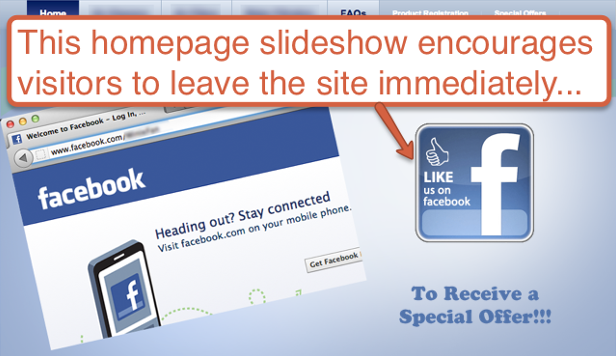
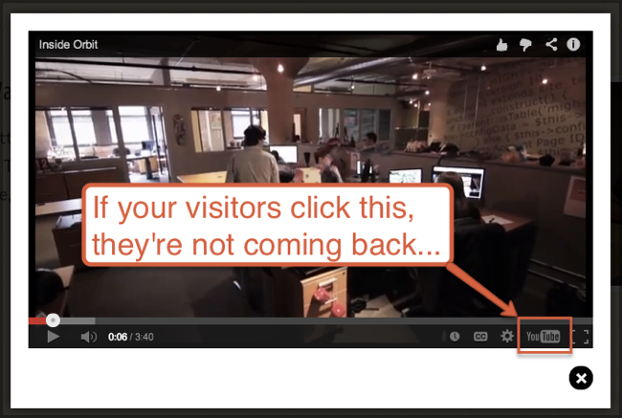
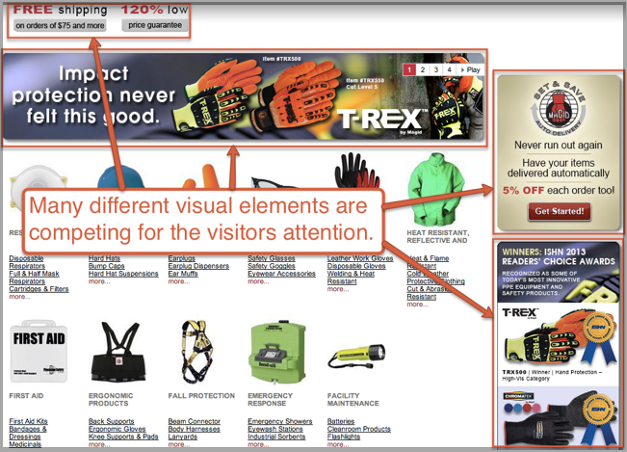

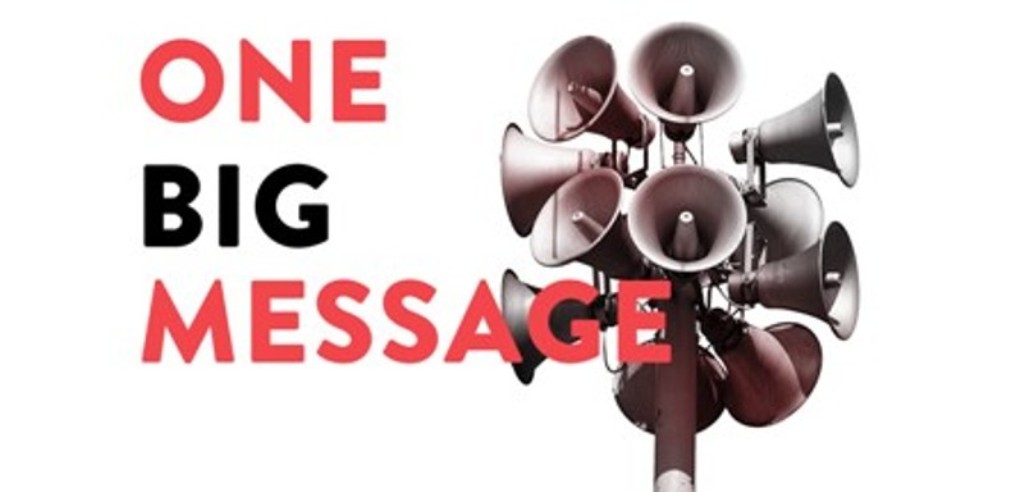 Nigel Hollis
Nigel Hollis The three little words “return on investment†may be the stuff of every marketers’ dreams or nightmares, depending on how their campaigns and initiatives are performing. Every company has limited resources and in order to justify continued expenses and expenditures, marketers are increasingly pressured to provide a reason, through excellent ROI, to keep or increase their budgets. In fact, nearly two-thirds of CMOs believe that
The three little words “return on investment†may be the stuff of every marketers’ dreams or nightmares, depending on how their campaigns and initiatives are performing. Every company has limited resources and in order to justify continued expenses and expenditures, marketers are increasingly pressured to provide a reason, through excellent ROI, to keep or increase their budgets. In fact, nearly two-thirds of CMOs believe that Link building is a project, often long and lengthy in nature. Good link building campaigns employ diverse strategies to build backlinks over the course of months, with diverse goals and objectives.
Link building is a project, often long and lengthy in nature. Good link building campaigns employ diverse strategies to build backlinks over the course of months, with diverse goals and objectives.
![LinkedIn Beats Facebook And Twitter As Top Source Of Visits For Corporate Websites [STUDY]](http://www.mediabistro.com/alltwitter/files/2013/10/social-corporate-website-traffic.png)
 SUMMARY: It can be a common marketing misconception that in order to evolve an email program, radical new ideas must take the place of former tactics. In a happy marriage of new and old, wedding and events supplier Koyal Wholesale launched its new summer product line combining proven and untested content tactics.
SUMMARY: It can be a common marketing misconception that in order to evolve an email program, radical new ideas must take the place of former tactics. In a happy marriage of new and old, wedding and events supplier Koyal Wholesale launched its new summer product line combining proven and untested content tactics. Small businesses are becoming a larger target for criminals seeking to access sensitive data because attackers are well aware that small businesses have limited resources or personnel dedicated to information system security. In an effort to combat cyber-attacks, the Department of Homeland Security established October as
Small businesses are becoming a larger target for criminals seeking to access sensitive data because attackers are well aware that small businesses have limited resources or personnel dedicated to information system security. In an effort to combat cyber-attacks, the Department of Homeland Security established October as